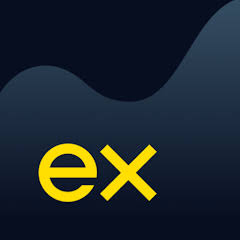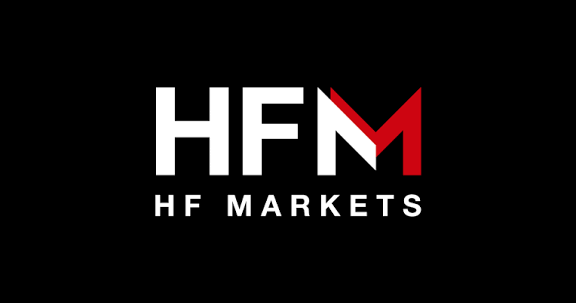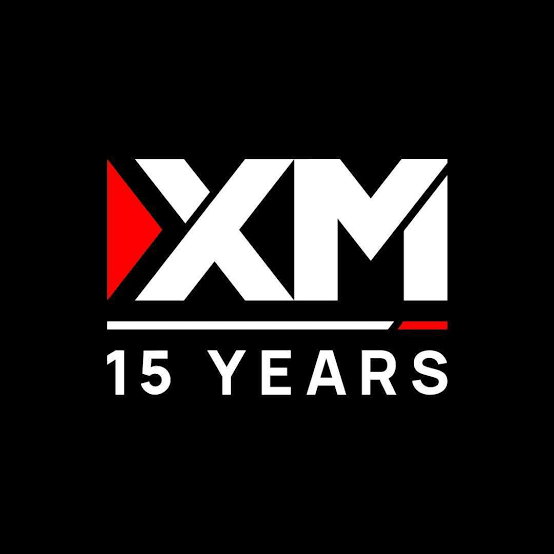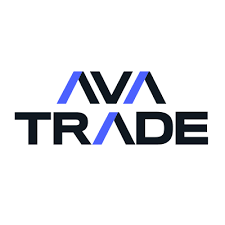Cheapest Brokers – Complete Educational Guide
Finding truly cheap brokers requires analyzing all-in trading costs, not just advertised spreads. This comprehensive educational guide explains how to evaluate brokers based on total cost of trading: spreads, commissions, financing charges, slippage, and hidden fees. Educational only; always test brokers with demo accounts before committing real capital.
Educational Note: This guide is for educational purposes only. Trading carries significant financial risk. The "cheapest" broker isn't necessarily the best choice if it compromises on execution quality, platform stability, or regulatory protection. Always prioritize safety and reliability alongside cost considerations.
Recommended Brokers 2025
Educational access and demo-first practice. No investment advice.
Table of Contents
Understanding Trading Costs
- Recommended Brokers
- The True Cost of Trading
- Spreads vs Commissions
- Hidden & Indirect Costs
- Slippage & Its Impact
- Overnight Financing Costs
Cost Analysis Framework
Broker Cost Comparisons
Cost Optimization Strategies
The True Cost of Trading
Many traders focus only on the advertised spreads when comparing brokers, but this represents just one component of the total trading cost. To accurately identify the cheapest brokers, you need to consider all expenses that impact your bottom line.
The true cost of trading includes both direct costs (visible charges) and indirect costs (less obvious expenses that affect your profitability). Understanding these components is essential for making informed broker comparisons.
Components of Total Trading Cost
- Spread: The difference between bid and ask prices
- Commission: Fixed or percentage-based fees per trade
- Financing Charges: Overnight position costs (swap rates)
- Slippage: Difference between expected and actual fill prices
- Currency Conversion: Costs when trading in different account currencies
- Platform Fees: Charges for specific platforms or data feeds
- Inactivity Fees: Penalties for dormant accounts
- Withdrawal Fees: Costs to access your funds
- Deposit Fees: Potential charges for funding your account
Typical Cost Distribution for Active Traders
Based on analysis of retail trading accounts:
• Spreads: 45-65% of total costs
• Commissions: 15-30% of total costs
• Slippage: 10-25% of total costs
• Financing: 5-15% of total costs
• Other Fees: 2-8% of total costs
Note: Percentages vary significantly based on trading style, instruments, and holding periods.
Spreads vs Commissions: Understanding the Models
Brokers typically use one of two primary pricing models: spread-based or commission-based. Understanding the difference is crucial for accurate cost comparisons.
Spread-Only Pricing Model
In this model, the broker's compensation comes entirely from the spread—the difference between the buy and sell price. There are no separate commission charges.
Example: Spread-Only Trading
EUR/USD quoted at: 1.1050 / 1.1053
Spread = 1.1053 - 1.1050 = 0.0003 (3 pips)
Trading 1 standard lot (100,000 units):
Cost = 100,000 × 0.0003 = $30
This $30 is the total transaction cost with no additional commissions.
Commission-Based Pricing Model
In this model, the broker charges a separate commission per trade, typically with much tighter raw spreads that more closely reflect the underlying market.
Example: Commission-Based Trading
EUR/USD quoted at: 1.1051 / 1.1052
Spread = 1.1052 - 1.1051 = 0.0001 (1 pip)
Commission = $5 per standard lot (each way)
Trading 1 standard lot (100,000 units):
Spread cost = 100,000 × 0.0001 = $10
Commission = $5 × 2 (entry and exit) = $10
Total cost = $10 (spread) + $10 (commission) = $20
Which Model is Cheaper?
The answer depends on your trading style:
| Trading Style | Typically Cheaper With | Reason |
|---|---|---|
| High Frequency/Scalping | Commission-Based | Tighter spreads benefit frequent, small trades |
| Position Trading | Spread-Only | Fewer total transactions reduce commission impact |
| Swing Trading | Depends on volume | Medium frequency makes model choice less clear |
| Small Account Sizes | Spread-Only | Fixed commissions represent higher percentage of small trades |
| Large Account Sizes | Commission-Based | Volume discounts often available on commissions |
Cost Analysis Tip: Many brokers offer both pricing models through different account types. Calculate your expected costs under both models based on your typical trade size and frequency to determine which would be more economical for your specific situation.
Slippage & Its Impact on Trading Costs
Slippage refers to the difference between the expected price of a trade and the price at which the trade is actually executed. This often-overlooked cost can significantly impact profitability, especially for certain trading styles.
Types of Slippage
Positive Slippage
Your order executes at a better price than requested. This reduces your trading costs and increases profits.
Negative Slippage
Your order executes at a worse price than requested. This increases your trading costs and reduces profits.
Factors Affecting Slippage
| Factor | Impact on Slippage | Typical Range |
|---|---|---|
| Market Volatility | Higher volatility increases slippage | 0.5-5+ pips during high volatility |
| Trade Size | Larger orders experience more slippage | 0.1-2 pips based on liquidity |
| Liquidity of Instrument | Less liquid instruments have higher slippage | Major pairs: 0.1-1 pip; Exotics: 1-10+ pips |
| Order Type | Market orders have more slippage than limits | Market: 0.5-3 pips; Limit: 0 pips |
| Broker Execution Model | STP/ECN typically has less slippage than market maker | STP: 0.1-1 pip; Market Maker: 0.5-3 pips |
| Time of Day | Overlap sessions have less slippage | London/NY overlap: lowest slippage |
Quantifying Slippage Costs
Example: Slippage Impact on Trading Results
Trader executes 20 trades per day with average size of 1 standard lot
Average negative slippage: 0.5 pips per trade
Cost per pip on EUR/USD: $10 per standard lot
Daily slippage cost = 20 trades × 0.5 pips × $10 = $100
Monthly slippage cost (20 trading days) = $100 × 20 = $2,000
Annual slippage cost = $2,000 × 12 = $24,000
This demonstrates how seemingly small slippage can create substantial costs over time.
Cost Reduction Tip: Use limit orders instead of market orders whenever possible to control execution price and eliminate negative slippage. Also consider trading during high-liquidity periods and avoiding major news events to minimize slippage.
Overnight Financing Costs (Swap Rates)
For positions held overnight, traders incur financing charges known as swap rates or rollover fees. These costs can significantly impact the profitability of medium to long-term trades.
How Swap Rates Work
Swap rates represent the interest rate differential between the two currencies in a pair, plus the broker's markup. Depending on the direction of your trade and the interest rate differential, swaps can be either a cost or a credit.
Example: Calculating Swap Costs
Trade: Long EUR/USD (buy EUR, sell USD)
EUR interest rate: 2% | USD interest rate: 4%
Theoretical swap = 2% - 4% = -2% (you pay)
Broker markup: +1%
Actual swap rate = -3% annually
Daily swap = -3% ÷ 365 = -0.0082% daily
Position: 1 standard lot (€100,000)
Daily cost = €100,000 × 0.000082 = €8.20 (converted to account currency)
Swap Rate Comparison Across Brokers
| Broker | EUR/USD Long | EUR/USD Short | GBP/JPY Long | GBP/JPY Short | Swap-Free Option |
|---|---|---|---|---|---|
| Deriv | -0.008% | -0.005% | -0.012% | -0.009% | Yes |
| HFM | -0.006% | -0.004% | -0.010% | -0.008% | Yes |
| Exness | -0.005% | -0.003% | -0.009% | -0.007% | Yes |
| XM | -0.007% | -0.005% | -0.011% | -0.009% | Yes |
| AvaTrade | -0.009% | -0.006% | -0.014% | -0.011% | Yes |
Trading Strategy Consideration: For day traders who close all positions before the end of the trading day, swap rates are irrelevant. For swing and position traders, comparing swap rates between brokers can lead to significant savings, especially for carry trades where you might actually earn positive swap.
Calculating All-In Trading Costs
To accurately compare brokers, you need to calculate the total cost of trading based on your specific trading patterns. This involves considering all cost components and how they interact with your strategy.
Step-by-Step Cost Calculation
Example: Complete Cost Calculation for a Swing Trader
Trader Profile: Swing trades EUR/USD, 10 trades per week, average hold time 3 days, 1 standard lot per trade
Broker A (Spread-Only): 1.8 pip spread, no commission, $8 daily swap
Broker B (Commission-Based): 0.6 pip spread, $7 round trip commission, $6 daily swap
Weekly Cost Calculation:
Broker A: (10 trades × 1.8 pips × $10) + (10 trades × 3 days × $8/3) = $180 + $80 = $260 weekly
Broker B: (10 trades × 0.6 pips × $10) + (10 trades × $7) + (10 trades × 3 days × $6/3) = $60 + $70 + $60 = $190 weekly
Annual Cost (48 weeks):
Broker A: $260 × 48 = $12,480
Broker B: $190 × 48 = $9,120
Savings with Broker B: $3,360 annually (27% reduction)
Cost Calculation Formula
Total Cost = (Spread Cost + Commission Cost + Slippage Cost + Swap Cost + Other Fees) × Trade Frequency
Where:
• Spread Cost = Trade Size × Spread in Pips × Pip Value
• Commission Cost = Commission per Trade × Number of Trades
• Slippage Cost = Trade Size × Average Slippage × Pip Value
• Swap Cost = Daily Swap × Number of Nights Position Held
• Other Fees = Inactivity, Withdrawal, Conversion, etc.
Practical Application: Create a simple spreadsheet with your typical trading parameters to quickly compare total costs across different brokers. Update it periodically as your trading style or volume changes.
Cost Considerations by Trading Style
Different trading styles have distinct cost profiles. Understanding which costs matter most for your approach can help you select the most economical broker for your specific needs.
Cost Priorities by Trading Style
| Trading Style | Primary Cost Concern | Secondary Cost Concern | Typically Best With |
|---|---|---|---|
| Scalping | Spreads & Slippage | Commissions | ECN/STP with tight spreads |
| Day Trading | Spreads & Commissions | Slippage | Competitive all-around pricing |
| Swing Trading | Swap Rates | Spreads | Low swap rates or swap-free |
| Position Trading | Swap Rates | Inactivity Fees | Low swaps, no inactivity fees |
| News Trading | Slippage & Spread Widening | Execution Reliability | STP with stable execution |
| Algorithmic Trading | Commissions | API/Platform Fees | Volume commission discounts |
Trading Volume Impact on Costs
Your trading volume significantly influences which cost structure works best for you. Higher volume traders can often access tiered pricing and volume discounts not available to occasional traders.
Low Volume (< 10 lots/month)
Focus on spreads and absence of inactivity fees. Commission-based models often too expensive.
Medium Volume (10-100 lots/month)
Compare both spread-only and commission models. Consider basic volume tiers.
High Volume (> 100 lots/month)
Negotiate custom pricing. Commission-based usually cheapest with volume discounts.
Volume Discounts & Tiered Pricing
Many brokers offer reduced costs for higher volume traders through tiered pricing structures. Understanding these discounts can lead to significant savings as your trading activity increases.
Common Volume Discount Structures
| Broker | Tier 1 (0-10 lots) | Tier 2 (10-50 lots) | Tier 3 (50-200 lots) | Tier 4 (200+ lots) | Custom Pricing |
|---|---|---|---|---|---|
| Deriv | $0 commission | $0 commission | $0 commission | $0 commission | No |
| HFM | $6 per lot | $5 per lot | $4 per lot | $3 per lot | Yes (>500 lots) |
| Exness | $0 commission | $0 commission | $0 commission | $0 commission | No |
| XM | $0 commission | $0 commission | $0 commission | $0 commission | No |
| AvaTrade | $0 commission | $0 commission | $0 commission | $0 commission | Yes (>1000 lots) |
Strategies to Qualify for Better Pricing
- Consolidate Accounts: Use a single broker rather than spreading volume across multiple brokers
- Negotiate in Advance: Some brokers will offer better terms if you commit to specific volume
- Join Trading Communities: Some brokers offer group discounts for trading communities
- Consider Introducing Broker Programs: If you have a network of traders, IB status can provide better pricing
- Monitor Your Volume: Regularly check if you've reached the next discount tier
Volume Planning: When comparing brokers, consider not just your current volume but your projected volume over the next 6-12 months. A broker that's competitive at low volumes might not be the best choice if you plan to significantly increase your trading activity.
Account Type Cost Comparison
Most brokers offer multiple account types with different cost structures. Understanding the trade-offs between these options is key to selecting the most cost-effective account for your needs.
Common Account Types and Their Cost Structures
| Account Type | Typical Spreads | Commissions | Minimum Deposit | Best For |
|---|---|---|---|---|
| Standard/Micro | 1.5-3 pips | $0 | $5-$100 | Beginners, small accounts |
| ECN/Raw Spread | 0.1-0.5 pips | $3-$7 per lot | $500-$2000 | Active traders, scalpers |
| Pro/Premium | 0.8-1.5 pips | $0-$3 per lot | $5000+ | High volume traders |
| Islamic/Swap-Free | 1.5-3 pips | $0 | $100-$500 | Traders avoiding swap |
| Professional | 0.5-1.2 pips | $0-$2 per lot | $10,000+ | Qualified professional traders |
Break-Even Analysis for Account Types
Example: Determining When ECN Account Becomes Cheaper Than Standard
Standard Account: 1.8 pip spread, no commission
ECN Account: 0.3 pip spread, $5 commission per standard lot
Cost per standard lot:
Standard = 1.8 pips × $10 = $18
ECN = (0.3 pips × $10) + $5 = $3 + $5 = $8
Monthly break-even calculation:
Assuming 20 trades per month:
Standard = 20 × $18 = $360
ECN = 20 × $8 = $160
Savings with ECN: $200 monthly (56% reduction)
Even with the higher minimum deposit, the ECN account is significantly cheaper for this trading volume.
Deriv Cost Analysis
Pricing Model
Spread-only with no commissions
Minimum Deposit
$5 (lowest barrier to entry)
Inactivity Fee
None
Cost Structure Details
- All account types are commission-free
- Competitive spreads on major pairs during normal market conditions
- No deposit or withdrawal fees for most payment methods
- Swap rates slightly higher than industry average
- No volume-based discount tiers (flat pricing for all clients)
Average Spreads (in pips)
| Instrument | Average Spread | Peak Hours Spread | High Volatility Spread |
|---|---|---|---|
| EUR/USD | 1.6 | 1.4 | 2.5+ |
| GBP/USD | 2.1 | 1.8 | 3.5+ |
| USD/JPY | 1.7 | 1.5 | 2.8+ |
| Gold | 35 | 30 | 60+ |
| BTC/USD | 85 | 75 | 150+ |
Pros for Cost-Conscious Traders
- Extremely low minimum deposit requirement
- No commissions on any account type
- No inactivity fees that erode small accounts
- Competitive spreads during normal market conditions
- Free withdrawals for most payment methods
Cost Considerations
- Spreads can widen significantly during high volatility
- No ECN/raw spread account option for very active traders
- Swap rates are slightly above industry average
- No volume-based discounts for high-frequency traders
- Synthetic products have different pricing than underlying markets
Best For Cost Savings:
Beginners with small accounts, traders who prefer simple spread-only pricing, those trading during normal market hours, and anyone wanting to avoid inactivity fees.
HFM Cost Analysis
Pricing Model
Multiple options (Spread-only & Commission-based)
Minimum Deposit
$0 (on some account types)
Inactivity Fee
$5 after 6 months
Cost Structure Details
- Multiple account types with different cost structures
- Volume-based discounts available on premium accounts
- Competitive swap rates compared to industry
- No deposit fees for most payment methods
- Withdrawal fees apply to some payment methods
Account Type Comparison
| Account Type | EUR/USD Spread | Commission | Minimum Deposit | Best For |
|---|---|---|---|---|
| Micro | 1.8 pips | $0 | $0 | Beginners, testing |
| Premium | 1.5 pips | $0 | $100 | Standard traders |
| HFC | 0.5 pips | $6 per lot | $500 | Active traders |
| Zero Spread | 0.0 pips | $9 per lot | $500 | Scalpers |
Pros for Cost-Conscious Traders
- Multiple account types to match different trading styles
- Volume-based discounts for high-frequency traders
- Competitive swap rates reduce overnight holding costs
- No minimum deposit on some account types
- Tight spreads on ECN-style accounts
Cost Considerations
- Withdrawal fees apply to some payment methods ($1-$30)
- Inactivity fee after 6 months of no trading
- Premium accounts have higher minimum deposits
- Commission-based accounts only economical for sufficient volume
- Some educational resources require minimum trading volume
Best For Cost Savings:
Traders who want flexibility in cost structures, active traders who can benefit from volume discounts, swing traders looking for competitive swap rates, and those who can maintain account activity to avoid fees.
Exness Cost Analysis
Pricing Model
Primarily spread-only with some commission options
Minimum Deposit
$1 (extremely low)
Inactivity Fee
None
Cost Structure Details
- Industry-leading low minimum deposit requirements
- Instant, fee-free withdrawals for most methods
- Free VPS available for qualified traders
- Competitive swap rates with no additional markup
- No deposit fees for any payment method
Spread Analysis (Average Pips)
| Instrument | Standard Account | Pro Account | Zero Account | Raw Spread Account |
|---|---|---|---|---|
| EUR/USD | 1.1 | 0.9 | 0.0 | 0.1 |
| GBP/USD | 1.5 | 1.2 | 0.0 | 0.2 |
| USD/JPY | 1.3 | 1.0 | 0.0 | 0.2 |
| Gold | 25 | 22 | 10 | 8 |
| BTC/USD | 65 | 55 | 35 | 30 |
Pros for Cost-Conscious Traders
- Extremely low minimum deposit across all account types
- Instant, fee-free withdrawals save time and money
- Free VPS for automated traders (saves $30-$100 monthly)
- Competitive spreads, especially on higher-tier accounts
- No inactivity fees protect small or intermittent traders
Cost Considerations
- Zero and Raw Spread accounts have commissions ($7-10 per lot)
- Limited availability in some regions affects service quality
- Educational resources less comprehensive than some competitors
- Customer support quality varies by region
- Fewer advanced trading tools included for free
Best For Cost Savings:
Traders with very small starting capital, those who value quick and free withdrawals, automated traders who can use the free VPS, and anyone wanting to avoid inactivity fees while maintaining flexibility.
XM Cost Analysis
Pricing Model
Spread-only with no commission accounts
Minimum Deposit
$5
Inactivity Fee
$5 after 12 months
Cost Structure Details
- All accounts are commission-free regardless of volume
- Negative balance protection on all account types
- Free educational resources and market analysis
- Moderate swap rates with Islamic account options
- Withdrawal fees apply to some payment methods
Account Type Spread Comparison
| Instrument | Micro Account | Standard Account | XM Zero Account | Shares Account |
|---|---|---|---|---|
| EUR/USD | 1.7 pips | 1.6 pips | 0.0 pips | 1.8 pips |
| GBP/USD | 2.2 pips | 2.0 pips | 0.1 pips | 2.3 pips |
| USD/JPY | 1.8 pips | 1.7 pips | 0.1 pips | 1.9 pips |
| Gold | 40 | 35 | 15 | 45 |
| Oil | 6 | 5 | 3 | 7 |
Pros for Cost-Conscious Traders
- Very low minimum deposit makes it accessible to all traders
- No commissions on any account type simplifies cost calculation
- Generous 12-month period before inactivity fees apply
- Free comprehensive educational resources save on external education
- Negative balance protection prevents catastrophic losses
Cost Considerations
- Spreads are slightly higher than some competitors
- Withdrawal fees can be $15-$30 depending on method
- No true ECN/commission-based accounts for very active traders
- XM Zero account has higher minimum deposit ($100)
- Limited product range compared to some multi-asset brokers
Best For Cost Savings:
Beginners and intermediate traders, those with small accounts, traders who value educational resources, anyone wanting simple commission-free pricing, and intermittent traders who appreciate the long inactivity fee grace period.
AvaTrade Cost Analysis
Pricing Model
Spread-only with no commission options
Minimum Deposit
$100
Inactivity Fee
$50 after 3 months
Cost Structure Details
- All-inclusive spread pricing with no separate commissions
- Wide range of trading instruments across multiple asset classes
- Multiple platform options including proprietary AvaTradeGO
- Higher swap rates than industry average
- Inactivity fees apply relatively quickly (3 months)
Spread Comparison Across Instruments
| Instrument | Average Spread | Competitor Average | Premium/Discount |
|---|---|---|---|
| EUR/USD | 1.8 pips | 1.5 pips | +0.3 pips |
| GBP/USD | 2.3 pips | 1.9 pips | +0.4 pips |
| USD/JPY | 1.9 pips | 1.6 pips | +0.3 pips |
| Gold | 45 | 35 | +10 |
| US Oil | 5 | 4 | +1 |
| Bitcoin | 95 | 75 | +20 |
Pros for Cost-Conscious Traders
- Simple, all-inclusive pricing with no hidden commissions
- Wide instrument selection allows diversification without multiple brokers
- Multiple platform options included at no extra cost
- Strong regulatory framework provides security for funds
- Comprehensive educational resources included
Cost Considerations
- Spreads are generally higher than competitors
- Inactivity fees apply after just 3 months ($50 quarterly)
- Higher swap rates increase costs for position traders
- No commission-based accounts for high-volume traders
- Withdrawal fees apply to some payment methods
Best For Cost Savings:
Traders who value platform variety and educational resources, those who trade multiple asset classes and want everything in one place, active traders who won't trigger inactivity fees, and traders who prefer simple all-inclusive pricing over optimizing for lowest possible costs.
Strategies to Reduce Trading Costs
Beyond selecting the right broker, several strategies can help minimize your overall trading expenses. Implementing these techniques can significantly improve your net profitability over time.
Practical Cost Reduction Techniques
Use Limit Orders
Instead of market orders, use limit orders to control execution price and eliminate negative slippage.
Trade During High Liquidity
Focus trading during London/NY overlap when spreads are tightest and slippage is minimal.
Avoid News Events
Trade outside major news announcements when spreads widen dramatically and slippage increases.
Consolidate Trades
Instead of multiple small positions, use appropriate position sizing with fewer entries.
Optimize Account Currency
Use the same currency as your primary trading pairs to avoid conversion fees.
Monitor Volume Tiers
Keep track of your trading volume to ensure you qualify for the best available pricing tier.
Cost-Saving Mindset Shifts
- Quality Over Quantity: Focus on higher-probability trades rather than frequent low-quality entries
- Patience in Execution: Wait for optimal entry points rather than chasing moves
- Strategic Position Sizing: Use appropriate sizing to avoid over-trading to achieve target exposure
- Regular Cost Reviews: Periodically audit your trading costs and broker comparisons
- Technology Optimization: Use technology to automate cost monitoring and optimization
Substantial Savings Potential: Implementing these strategies can typically reduce trading costs by 20-40% without changing your core trading strategy. For active traders, this can translate to thousands of dollars in annual savings.
Execution Optimization to Reduce Costs
Execution quality significantly impacts trading costs beyond the visible spreads and commissions. Optimizing your execution approach can lead to substantial savings, especially for active traders.
Execution Best Practices
| Technique | Implementation | Potential Cost Saving |
|---|---|---|
| Limit Order Entries | Set entry at support/resistance rather than market orders | 0.5-3 pips per trade |
| Staggered Exits | Use multiple take-profit levels with limit orders | 0.3-2 pips per trade |
| Avoid Guaranteed Stops | Use standard stops with appropriate position sizing | 0.5-1.5% premium saved |
| Trade Liquid Hours | Focus on high-volume trading sessions | 0.2-1 pip spread reduction |
| Monitor Economic Calendar | Avoid trading during high-impact news events | 1-10+ pip spread/slippage avoidance |
| Use VPS for Automation | Reduce execution latency for algorithmic strategies | 0.1-0.5 pip slippage reduction |
Technology-Enabled Cost Reduction
Trading Journals with Cost Tracking
Use journals that automatically track and categorize your trading costs to identify optimization opportunities.
API Integration
For algorithmic traders, direct API access can reduce execution latency and improve fill quality.
Cost Analysis Tools
Use broker comparison tools and cost calculators to regularly review your pricing structure.
Automated Monitoring
Set up alerts for when you approach volume discount tiers or when spreads widen abnormally.
Cost vs Value Analysis in Broker Selection
While minimizing costs is important, it shouldn't be the only factor in broker selection. Sometimes paying slightly higher costs is justified by receiving greater value in other areas that ultimately contribute to your trading success.
When Higher Costs May Be Justified
| Additional Value | Potential Cost Premium | When It's Worth It |
|---|---|---|
| Superior Execution Quality | 0.2-0.5 pip equivalent | For strategies sensitive to fill quality and slippage |
| Advanced Platform Features | $50-200 monthly | If features provide edge that outweighs costs |
| Comprehensive Education | 0.1-0.3 pip equivalent | For developing traders who benefit from learning resources |
| Stronger Regulation & Security | 0.1-0.4 pip equivalent | Always worth it for capital protection |
| Better Customer Support | 0.1-0.2 pip equivalent | When trading complex strategies or large sizes |
| Wider Product Range | 0.1-0.3 pip equivalent | If you trade multiple asset classes |
Calculating Your Personal Value Equation
Value Assessment Framework
1. Quantify the cost difference between brokers based on your trading patterns
2. Identify value differences in execution, platforms, education, etc.
3. Estimate monetary value of these differences to your trading
4. Compare net value = (Value Benefits) - (Cost Difference)
5. Choose the broker with the highest positive net value
Example: Broker A costs $100 more monthly but provides tools and execution that improve your results by $300 monthly. Net value = +$200 for Broker A.
Balanced Approach: The cheapest broker isn't automatically the best choice. Consider the total value proposition, including execution quality, platform stability, educational resources, and customer support. Sometimes paying slightly more provides disproportionate benefits to your trading performance and capital security.
Demo Account Testing for Cost Verification
Before committing real capital, thoroughly testing brokers with demo accounts is the most reliable way to verify their actual costs and execution quality under your specific trading conditions.
Effective Demo Testing Methodology
Trade Your Actual Strategy
Replicate your live trading approach including typical instruments, times, and order types.
Track All Cost Components
Record spreads, commissions, slippage, and any other charges for every trade.
Test Different Market Conditions
Trade during normal, high volatility, and news event conditions to see cost variations.
Compare Multiple Brokers Simultaneously
Open demo accounts with 2-3 finalist brokers and trade the same strategies.
Demo Testing Checklist
- Spread Consistency: Do spreads remain stable during your typical trading hours?
- Execution Speed: How quickly are orders filled compared to your current broker?
- Slippage Patterns: Is slippage typically positive, negative, or neutral?
- Platform Reliability: Does the platform perform well during high volatility?
- Order Types: Do all the order types you use work as expected?
- Mobile Experience: If you trade mobile, test the app thoroughly
- Customer Support: Test response times and knowledge with non-urgent questions
Testing Duration Recommendation: Test each broker for at least 2-4 weeks to capture different market conditions and get statistically significant cost data. For very active strategies, 1-2 weeks may be sufficient if you generate enough trade samples.
Conclusion: Finding Your Optimal Cost-Structure Fit
Identifying the truly cheapest broker requires a comprehensive analysis of all trading costs matched to your specific trading style, volume, and instrument preferences. The lowest advertised spread doesn't necessarily translate to the lowest total cost of trading.
Key takeaways for cost-optimized broker selection:
- Calculate All-In Costs: Consider spreads, commissions, slippage, swaps, and hidden fees
- Match Cost Structure to Trading Style: Scalpers need tight spreads, position traders need low swaps
- Test Before Committing: Use demo accounts to verify actual costs under your trading conditions
- Consider Total Value: Sometimes slightly higher costs are justified by better execution or features
- Review Periodically: As your trading evolves, reassess if your broker still offers competitive pricing
Remember that while minimizing costs is important, preserving capital through reliable execution and strong regulation should remain the priority. The cheapest broker that compromises on execution quality or security may ultimately cost you more in missed opportunities or actual losses.
Final Cost Consideration: Trading costs are just one component of overall profitability. A well-executed trading strategy with slightly higher costs will outperform a poor strategy with minimal costs every time. Focus on developing your edge first, then optimize costs to enhance that edge.
Start Your Cost-Optimized Trading Journey
The most reliable way to compare broker costs is to test them yourself with demo accounts. Most brokers offer free demo accounts that allow you to practice trading and measure actual costs without risking real money.
Recommended brokers for education and demo cost testing: Deriv · Deriv (alt) · HFM · Exness · AvaTrade · XM · XM (alt).
Cost Testing Recommendation:
Open demo accounts with 2-3 brokers that seem to match your cost needs based on this analysis. Trade your normal strategy on each for several weeks while meticulously tracking all costs. The broker with the lowest actual all-in costs for your specific approach is likely your most economical choice.




